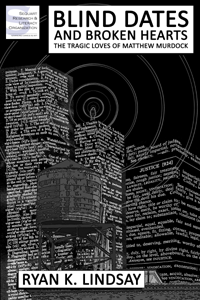Daredevil wastes little time in establishing that it’s not quite what a viewer might expect. The series opens with the aftermath of the fateful accident that took Matt Murdock’s sight and gifted him with heightened senses. It’s an unexpected move that seems to run counter to the series’ mode of delivery, an all at once debut on Netflix. With a guarantee of a thirteen episode run Daredevil certainly could have taken more time reaching what tends to be the center piece of these stories. Shockingly though, the first episode, “Into the Ring”, skips the accident altogether, portraying only the aftermath and sketching in the briefest of details, trusting that most viewers have an idea of what they’re getting into, or at least will be able to catch up as the episode moves forward. It’s the first in a series of smart decisions that makes “Into the Ring” an immensely successful first episode and bodes well for the rest of the show’s run.
Origin stories have become tired, and writers of comic adaptations are only starting to realize that many viewers already know enough about these stories to render them mostly useless. Origin stories have become dramatically inert due to how often they’ve been repeated. An origin story can be satisfying, but not when it’s hitting the same story beats that every other origin story has hit in every other superhero story for the past decade. Drew Goddard, the credited writer and creator of the series, recognizes this fact and by deploying only the bare minimum of material Daredevil the series doesn’t have to hold back as it struggles through tired exposition and setup. In fact, Matt Murdock’s out on the street dealing out justice within the first six minutes of the episode, and yet it doesn’t feel like the show has simply accelerated straight to the punching at the expense of character.
The depiction of Matt’s blinding and the scene that follows it, where Matt asks for absolution for his future vigilante activities, establishes both the series’ heart and its thematic core. Murdock’s a man on the edge, always in danger of slipping into his baser, more violent instincts, and the confession quickly and cleanly gets to this fact after the first scene has delved into the trauma of Matt’s loss of sight and the loving relationship between Matt and his father. It’s efficient storytelling that tells the viewer everything they need to know without belaboring the point needlessly in the way of so many origin stories. Within minutes we understand that Matt had a loving father who also had a violent nature and that Matt has difficulty reconciling those two things in his own life. It’s the character in a nutshell and once that’s been handled the series gets down to the business of telling a story about a young superhero.
The brevity of the origin material isn’t the only surprising aspect of “Into the Ring” though. Daredevil is a show specifically developed for Netflix and could have, like many Netflix shows, done slightly away with more episodic focused storytelling. For a while, it seems like “Into the Ring” may be doing just this as the plot sets up a complex web of manipulations from one of the construction companies that swooped in to clean up the mess that was left after the climax of The Avengers. That is, until the episode goes and resolves the majority of this plot at the end of its running time. The framed Karen Page is saved, the material she found exposed to the press, and the scam brought to life. It’s a quick and satisfying conclusion that manages to close off the episode in a way that feels wholly fulfilling without sacrificing larger plot concerns.
While the episode largely finishes the plot, it still manages to build out the world that the series will play in. The episode does a great job of establishing both Murdock and his enemies, giving all of them their due in just a few short scenes and a well-constructed and illuminating final montage that suggests the overall arc of the run without sacrificing emotional closure in the moment. As the sequence finds the characters and shows the viewer more of who they are and how they operate, it keeps cutting back to Matt, working out his aggressions on a punching bag at a deserted gym. The sequence does more than just foreshadow the places where the series might tread, it reinforces the rage that lurks within the outwardly placid Murdock. It’s a montage that locates the character within the story and the ringer he’s about to be put through.
Daredevil stories are almost invariably about bringing Matt Murdock low, and at least in that, it looks like this iteration of Daredevil is going to be what one would have anticipated. There’s a lot to be appreciative about in this first episode, and more than a little of that comes from the ways that Daredevil defies what one expects out of both a superhero origin story and a Netflix series. It’s a lean, efficient first episode that cruises through its runtime, never feeling drawn out or underdeveloped. Beautifully establishing the characters and their world while still delivering a satisfying story that is mostly resolved by episode’s end; it’s an exemplary initial installment of a series that promises a version of the character that’s at once familiar and unexpected.
























































